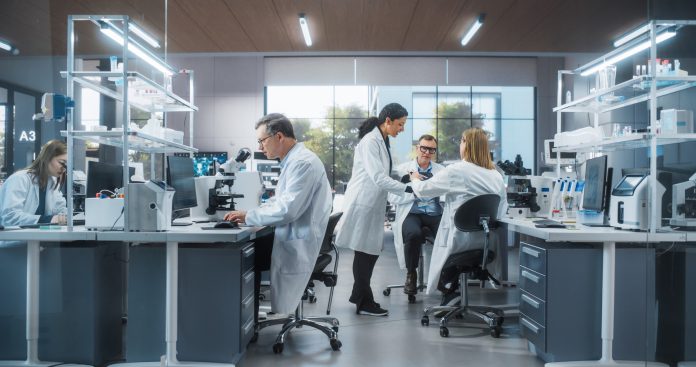A new study published in EMBO Reports highlights how EU-LIFE, European scientific research institutions manage the evolving challenges of core facilities, those vital hubs of cutting-edge technology and expertise supporting modern science
Developed by the EU-LIFE Core Facilities Working Group (CF WG), the study looks into how strategic change management can help sustain and improve these platforms throughout their lifecycle.
Strengthening the backbone of science research
Core core facilities, or scientific technology platforms, are essential resources embedded in research institutions.
They provide access to advanced instrumentation, technical support, and research data analysis services. However, the dynamic nature of scientific inquiry means that these platforms must continually adapt to new technologies, shifting internal demands, and financial pressures.
Recognising these challenges, the CF WG, established in 2015 as a forum for institutional collaboration, has taken steps to formalise knowledge-sharing and best practices across its member institutes.
The recently published paper is a culmination of these efforts. It shows a structured, context-neutral framework for managing core facilities, emphasising adaptability. The framework spans every stage of a platform’s lifecycle, including its inception, planning, implementation, daily operations, consolidation, and eventual closure. Rather than prescribing one-size-fits-all solutions, the guidance is designed to help facility managers navigate complex, ever-changing environments.
Understanding the case studies
One of the key strengths of the study is its real-world examples. It features three case studies from EU-LIFE member organisations that illustrate how institutions use change management techniques to respond effectively to different challenges.
In the Czech Republic, CEITEC (Central European Institute of Technology) faced declining usage of a specific facility. Rather than allow the resource to fade into obsolescence, the team successfully repurposed it to serve new research needs, aligning it with emerging scientific directions.
In Belgium, the VIB (Flanders Institute for Biotechnology) confronted a different challenge, surging demand for bioinformatics services. By strategically expanding capabilities and reallocating resources, VIB was able to meet this growing need without compromising quality or efficiency.
The third example comes from the UK, where The Babraham Institute addressed the financial strain of maintaining a high-cost DNA sequencer. Through careful evaluation and strategic restructuring, the facility was phased out to minimise disruption and allowed the institute to redirect funds toward more sustainable technologies.
A stronger research structure
These case studies highlight the importance of proactive management and flexible thinking in the high-stakes environment of scientific research. As institutions face increasing pressure to deliver results efficiently, the ability to manage change effectively becomes not just helpful but essential.
Overall, the study is a key resource for research operations teams across Europe and beyond. By promoting thoughtful decision-making and institutional agility, the EU-LIFE Core Facilities Working Group is helping to ensure that scientific infrastructure can keep pace with the fast-moving research frontiers.











